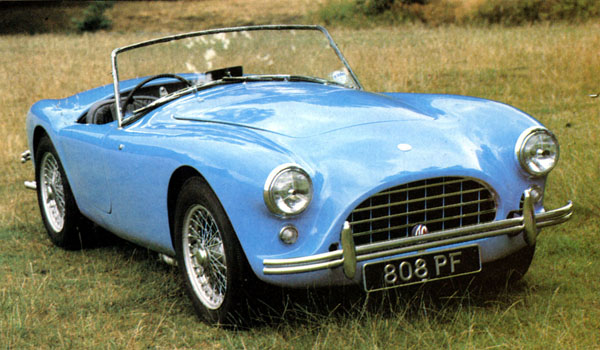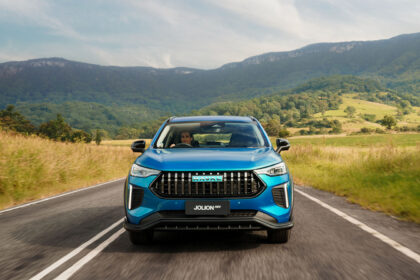
AC Cars re-entered the car market in 1947 with a rehash of the Thames Ditton, England pre-WW II model which was powered by a 2.0-litre overhead-cam straight-six engine. It was not, however, until 1953 when they released their new sports car that the company established its reputation as a sports car manufacturer.
A design by John Tojeiro was selected which used a ladder-type tubular frame, all-independent transverse leaf-spring suspension and an extremely attractive open two-seater alloy body with classic lines. In appearance many people felt the design was inspired by the Ferrari Barchetta, an appealing design at that time.
The 2.0-litre engine from the earlier model was initially used but with a top speed of 164km/h and relatively poor acceleration, 0-100km/h in 13 seconds, it was hardly a match for competitive sports cars of that time. The stiff leaf-spring suspension gave the car taut handling but like MGs of the time the ride was hard.
In 1956 the car was offered with the option of Bristol’s superb 2.0-litre 90kW straight-six engine coupled its own slick four-speed gearbox. This combination gave the car a lift in top speed to 186km/h and acceleration improved markedly with a reduction to nine seconds for the 0-100km/h burst. Overall this combination made for much better response and more pleasant driving.
Overdrive was also optionally available at this time and in 1957 the option of front disc brakes became available. Later these were fitted as standard. With the engine well back in the chassis, the Ace handled well and was successful in competition. From 1961 to 1963 there was a total of 47 Aces built using Ford’s 2.6-litre straight-six engine in place of the Bristol unit. These were specially modified to develop 127 kW.
In 1954 a sleek coupe version of the Ace was introduced. This was called the Aceca and bore a strong similarity to the Aston Martin DB2. This design had an early form of hatchback rear door but used the same basic timber-framed alloy body. As with the Ace, either the AC or Bristol engine could be ordered and as the body was slightly more aerodynamic it was a fraction faster than the Ace but the extra weight affected acceleration a little.
Car enthusiasts eagerly seek the AC Ace today, particularly in its Bristol-engined form should any come onto the market. In total 1099 Aces were built, including 466 with the Bristol engine and 320 in the Aceca coupe style.








